If you’re looking for an easy and low-maintenance plant, catmint is an excellent choice. After all, who doesn’t love a plant that will bloom for months, attract pollinators, AND is drought tolerant? Once you know how to grow catmint, you’ll be surprised at how resilient and versatile this hardy perennial herb truly is.
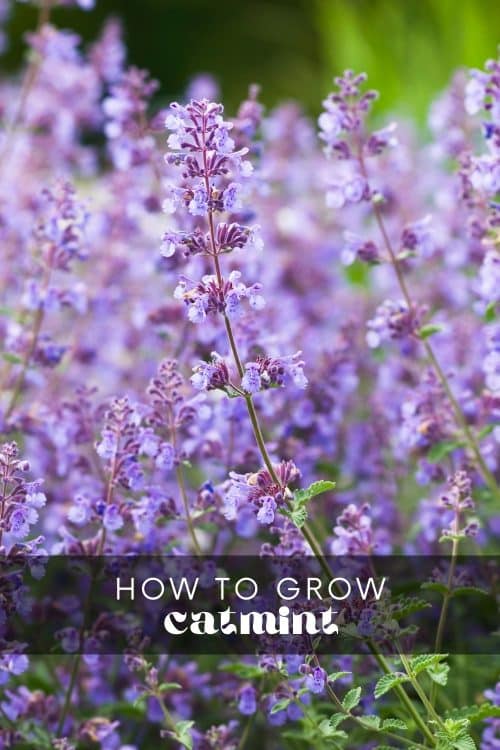
Catmint (Nepeta mussinii) is known for its beautiful purple-blue flowers and sweet, minty smell. It’s a member of the mint family, which means it’s a fast-growing and hardy plant. This also means it can be quite invasive. But don’t let that put you off growing catmint! The grey-green leaves and delicate flowers look brilliant as an edging plant. Catmint also grows well in container gardens, which is a good option for those wanting to control its spread.
So, how do you grow catmint? Let’s dive in and learn all about it.
Are Catmint and Catnip the Same?
You may have heard some people refer to catmint as catnip and vice versa. But are they the same thing?
While both plants are members of the mint family, catnip (Nepeta cataria) is a different species from catmint.
Catnip has a more weedy and wild appearance, whereas catmint has a more compact and tidy growth habit. And, of course, catnip is well-known for its ability to drive cats wild! This is due to the compound nepetalactone found in its leaves and stems.
Catmint does contain some nepetalactone, but it’s not nearly as potent as catnip. While some cats may enjoy rolling around in catmint plants, it won’t have the same effect as catnip. Catmint is grown more for its ornamental value.
Different Types of Catmint
Like many herbs, there are different cultivars of catmint available. Some popular varieties include:
- Faassen’s Catmint: This is the most commonly grown catmint. It does well in both full sun and partial shade and produces beautiful lavender-blue flowers.
- Japanese Catmint: For a showstopping display, try growing Japanese catmint. It produces large, purple flowers and grows to about 3 feet tall.
- Siberian Catmint: This tough plant is a good choice for colder climates. It’s known to have a cinnamony scent and produces blue-purple flowers.
- Greek Catmint: Do you have a large spot in your garden that needs filling? Greek catmint is a fast-growing variety. It can grow up to 6 feet tall and produces masses of pink-purple flowers.
What Is the Best Month to Plant Catmint?
The best time of year to plant catmint is spring, but you can plant it until early fall. If growing from seed, germinating in spring is recommended. The plants will then bloom in late spring to early summer.
However, if you’re starting with a potted plant, you can transplant it into the ground at any time during the growing season.
How Long Does Catmint Take to Grow?
Once planted, catmint can take 7-14 days to germinate in the right conditions. They will then take another 4 weeks to establish. Catmint typically blooms from late spring to summer and can last for several weeks. It’s not uncommon for catmint to have repeat blooms into the fall!
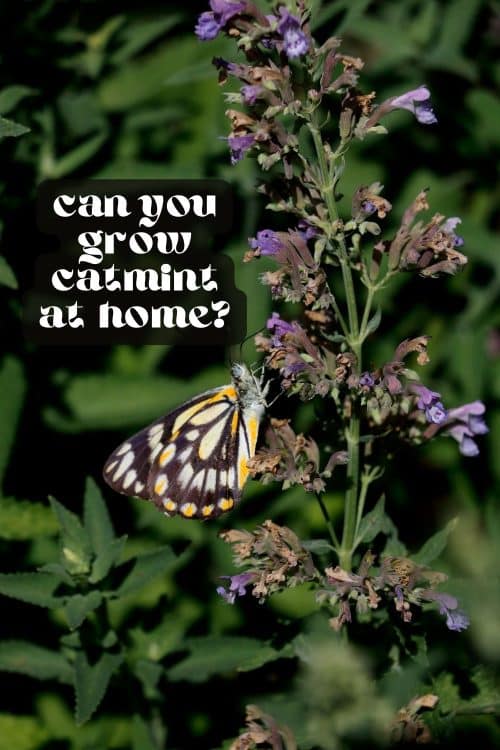
What Are the Best Growing Conditions for Catmint?
Fully-grown catmint is one of those plants you can just let be. It’s low maintenance and doesn’t require much intervention. However, new plants need some care to grow strong and healthy. It also helps to plant catmint in the right growing conditions.
Here are some things to consider when planting catmint:
Location
You can grow catmint either in containers or directly in the ground. It also grows well indoors as part of any window herb gardens! So long as it has good drainage and enough sunlight, catmint will thrive.
If planting in containers, make sure the pot is around 12 inches in diameter and has at least one drainage hole.
Soil
What’s good about catmint is it’s not too picky regarding soil. Some types can easily grow in clay, sandy, or loamy soil. But if potting in a container, a good quality, well-drained soil mix is best. The soil pH can range anywhere from 5.0 to 8.0 without causing any issues for the plant.
Sunlight
Catmint loves the sun and should be planted in a location with at least 6 hours of full sunlight daily. More sun also equals more blooms! That said, catmint likes some afternoon shade in hotter climates.
Temperature
Catmint is native to Europe and Asia, meaning it can tolerate cooler climates. However, it doesn’t do well with extreme heat and humidity. 55-70°F (12-21°C) is the ideal temperature range for catmint. It can even manage temperatures as low as -30 to -25°F (-34 to -32°C)! It will go dormant in the winter months and re-emerge in the early spring.
How to Grow Catmint
Growing catmint from seed is easy, but you can also purchase young plants from your local nursery.
Here’s how to grow catmint:
- To get a head start on the growing season, plant the seeds (if using) indoors 6-8 weeks before the last frost. Plant seeds in pots or trays filled with well-draining potting mix.
- You can also plant them directly in the ground after the last frost has passed.
- Press the seeds very gently into the soil. We want the soil to cover the seeds barely. This is because catmint seeds require light to germinate.
- Keep the soil consistently moist but not waterlogged.
- Put the container, if using, in a sunny spot.
- Pinch back the tops of each young plant when they reach around 3 inches tall to promote bushier growth.
- Once the seedlings are about 6 inches tall, they can be transplanted or moved outside.
- Harden off seedlings by gradually exposing them to outdoor conditions before fully transplanting them.
- If planting into the ground, make sure to space them at least 12 inches apart. Dig a hole slightly larger than the root ball and gently place the plant in it. Fill in the soil around the base of the plant and lightly press down. This is also how you would transplant a nursery-bought catmint plant.
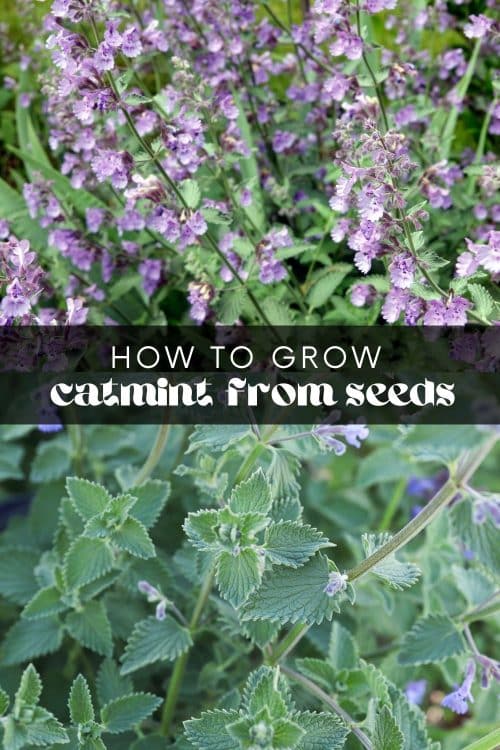
How to Propagate Catmint
Some catmint varieties are impossible to grow from seed. In this case, propagation is the way to go! The easiest way to do this is by using stem cuttings.
Here’s how to propagate catmint from cuttings:
- Cut a stem from your catmint plant that is around 4-6 inches long. Remove the catmint leaves from the lower half of the stem.
- Put your cutting in a glass of water and place it in a bright but indirect light.
- Change the water every few days.
- After about 2 weeks, you should start to see roots forming. Once the roots are around an inch long, you can plant your cutting into a pot with well-draining potting mix or garden bed.
You can also plant your cutting directly into potting soil and water it regularly if you’d prefer.
How to Care for Catmint Plants
You’re probably wondering how to care for your catmint plants once established. Don’t worry, it’s very easy!
Watering
New growth needs more water than established plants. Check the top inch of soil weekly and water if it’s dry. Once your catmint is established, there’s no need to water it! They are drought-resistant plants and can thrive in dry soil conditions.
Pest Control
Pests don’t really go for catmint. If anything, it’s cats who will be attracted to your catmint plants! Consider using a fence or mesh to protect your plants from curious cats.
Fertilizer
Catmint plants don’t need much fertilizer. You can use a well-balanced organic fertilizer once or twice a year, but it’s not necessary for their survival. Too much fertilizer can make the plants leggy and flimsy.
Deadheading
Deadheading is where you remove any dead flowers from your catmint plants. This will encourage more flowers to bloom and keep the plants looking tidy. You can simply pinch off the faded flowers with your fingers or use shears.
Can Humans Eat Catmint?
Most people don’t eat catmint, but almost all catmint varieties are edible!
It can be used fresh or dried in herbal teas, salads, and other dishes. Just be sure to wash it well and check the type you have is edible before using it.
How to Harvest Catmint
If you want to harvest catmint for cooking or drying, you’re best waiting for it to flower first. The flavor will be much stronger at this stage. Cut the stems just above a leaf node, then strip off the leaves and flowers. Always leave at least a third of the plant when harvesting to keep it healthy and happy.
How to Store Catmint
Catmint can be stored in a few different ways. Which method you choose will depend on how you want to use it.
Storing Catmint at Room Temperature
You don’t need to refrigerate catmint, but it can be stored at room temperature. Leave the leaves and flowers attached to the stem and keep them in a cool, dry place. They will last for a few days this way.
Freezing Catmint
Wash your catmint and dry it thoroughly. Then, lay the leaves and flowers in a single layer on a baking sheet and place them in the freezer. Once frozen, transfer them to an airtight container or bag. Frozen catmint will last for 6 months before losing its potency.
Drying Out Catmint
This is the most common method of storing catmint, as many people use it for tea. Tie the stems together and hang them upside down in a warm, dry place, or use an herb dehydrator. Store them in an airtight container once fully dried. Dried catmint will keep for about a year.
Catmint is one of the easiest herbs to grow and care for, even for beginners! It’s the perfect blend of beauty and functionality. So whether you want to make catmint tea or add a pop of purple to your own garden, you’ll love this plant!

Check out these Herb Posts:
- What Herbs Are Toxic to Dogs?
- DIY Kitchen Window Herb Garden Ideas
- Herb Harvest and Preservation
- Herb Garden Ideas
- How to Get Rid of Gnats on Indoor Herbs
- 12 Best Herb Garden Plants
- 8 Best Indoor Herb Plants
- How to Grow Catmint
- How to Grow Cilantro
- How Long Does It Take Basil to Grow?
- How to Grow Mint Outdoors
- How to Grow Citronella Plants
- How to Grow Mint Indoors
- How to Grow Lavender in Containers
- How to Grow Oregano

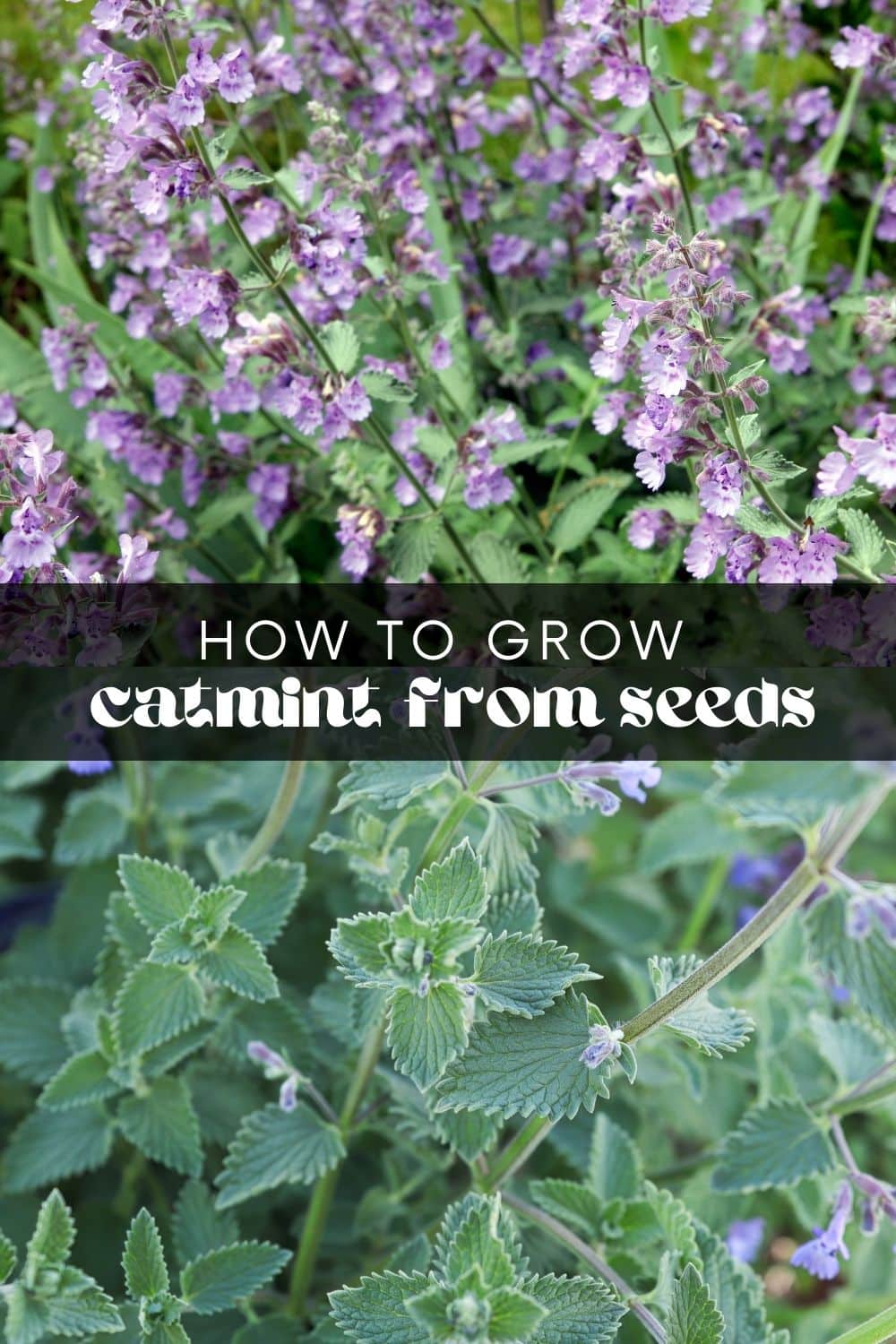
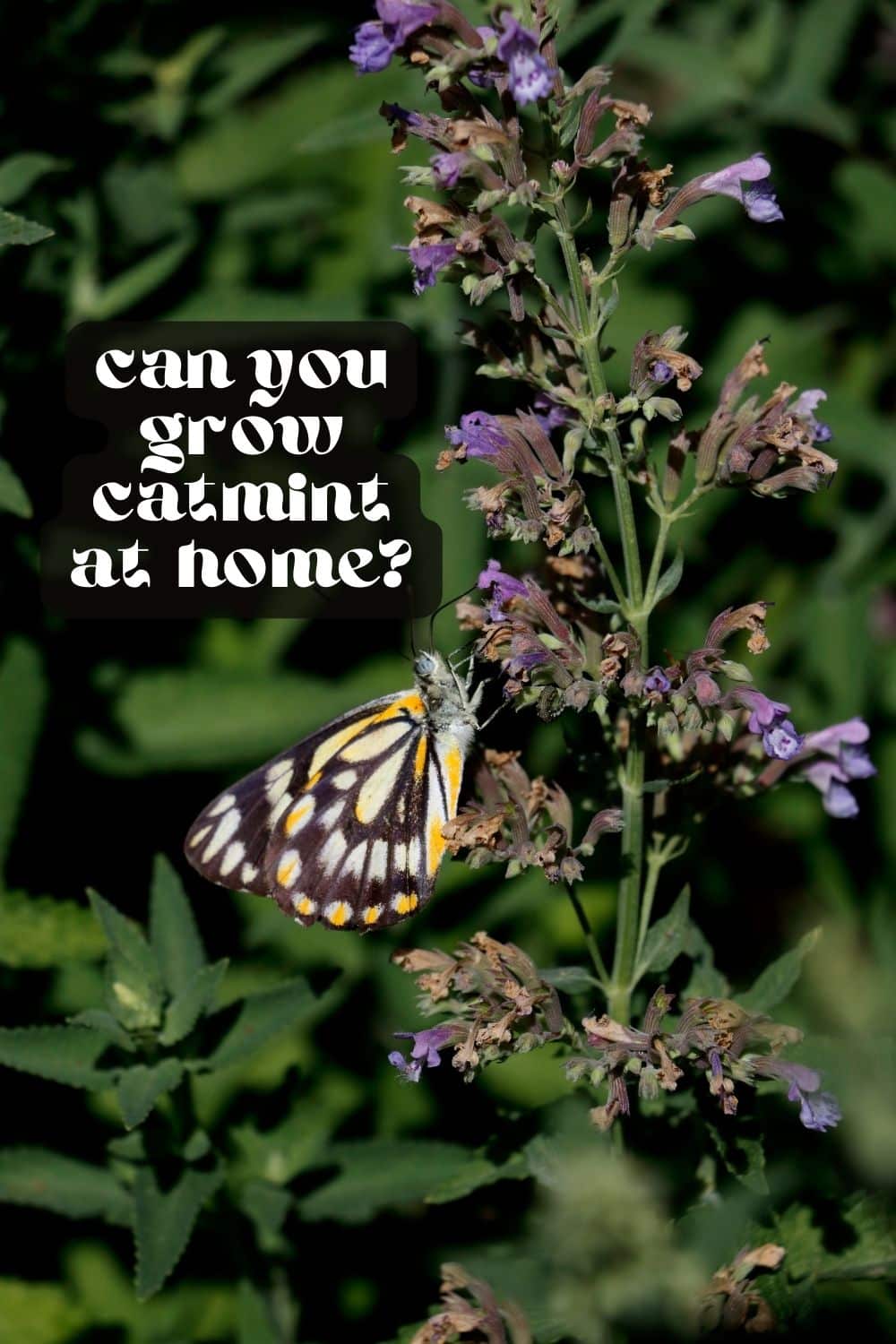
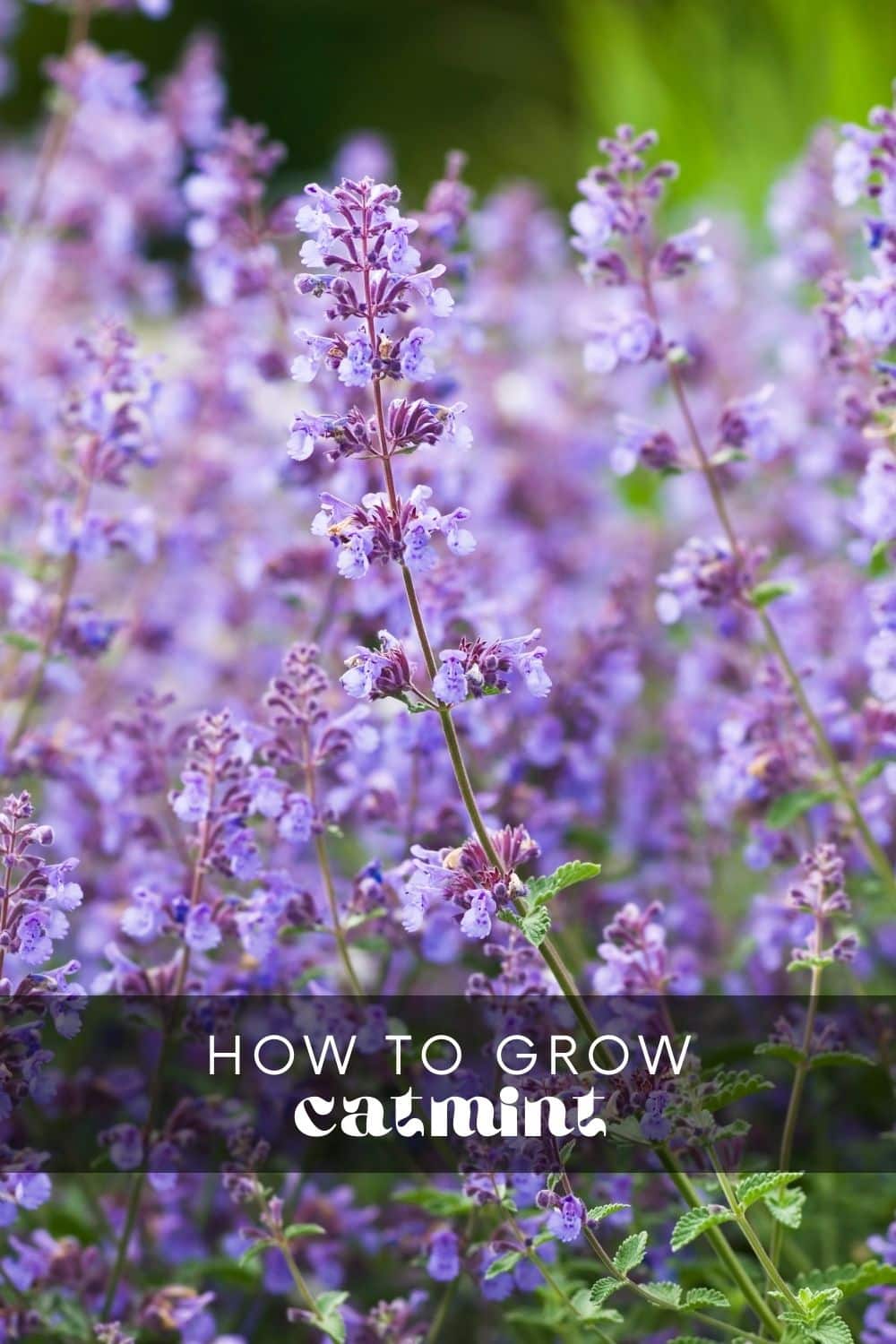





[…] How to Grow Catmint […]